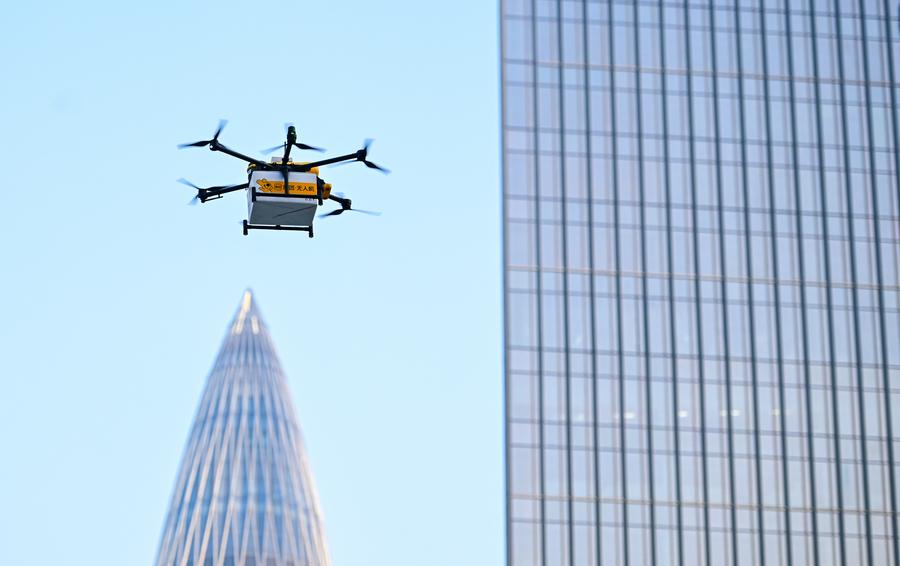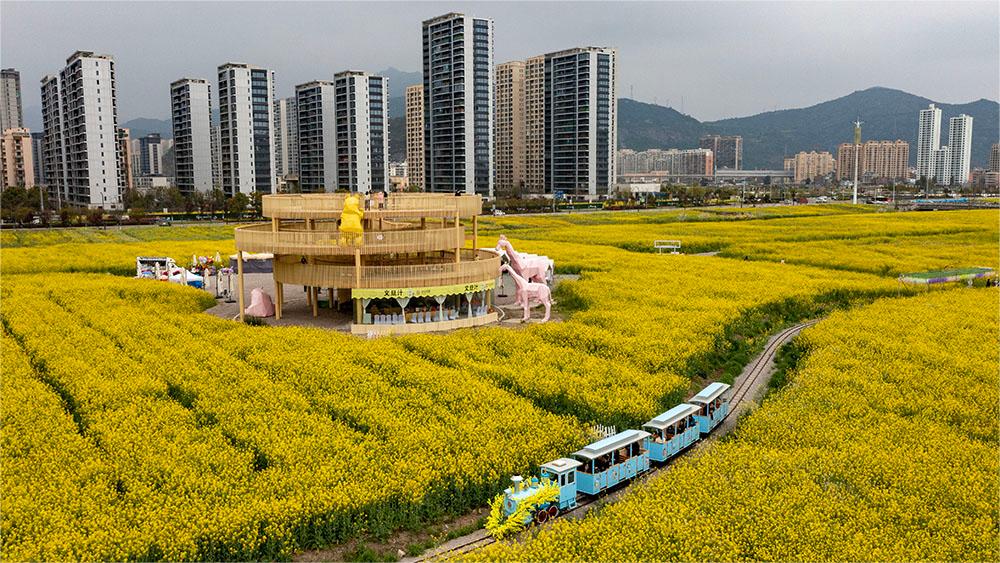China's low-altitude economy soars to new heights
China's low-altitude economy, comprising the traditional general aviation sector and the burgeoning unmanned aerial vehicle (UAV) industry, has seen significant growth in recent years, fueled by market demand and policy incentives.

An unmanned food delivery drone is pictured in Shenzhen, south China's Guangdong Province, Nov. 24, 2023. (Xinhua/Mao Siqian)
Sun Wensheng, deputy director of the general department of the Civil Aviation Administration of China (CAAC), described the low-altitude economy as a strategic and emerging sector characterized by its high scientific and technological content, extensive industrial chain, and complex application scenarios, among others. Sun said that the sector embodies the characteristics of new quality productive forces, and enjoys significant growth potential.
China has experienced significant advancements in its traditional general aviation sector. By the end of 2023, China had 690 registered general aviation enterprises with a fleet of 2,900 aircraft, with an average of 114,000 flight hours per month, according to Shang Kejia, deputy director of the CAAC’s transport department. These figures represent a remarkable increase, with the number of enterprises, aircraft and flight hours rising by 2.5 times, 1.5 times and 1.8 times, respectively, compared to 2015.
The country's UAV industry has also seen rapid development. By the end of 2023, China had registered around 1.27 million UAVs, marking a year-on-year increase of 32.2 percent, Shang said. About 19,000 enterprises are engaged in UAV operations.
By the end of last year, China had 449 general aviation airports, representing a 7.4-fold expansion from 2015, Shang added.
"UAV flight activities have shown a positive trend in China in recent years," said Luo Hongjiang, deputy director of the CAAC's air traffic management office.
Civil UAVs have already been widely deployed in agriculture, forest management, animal husbandry, fisheries, entertainment, and aerial photography. Additionally, Luo added that the establishment of management modes and technical standards for urban and logistics applications has laid the foundation for their broader application.
To promote the healthy development of the low-altitude economy, civil aviation authorities have introduced a series of supportive policies and reform and innovation measures concerning airport construction, market access management, and services, among others. As of the end of 2023, China had constructed 32 flight service stations.
Going forward, the CAAC aims to enhance research and planning in key areas, including airworthiness certification, low-altitude flight services, infrastructure construction standards, market access and safety supervision.
Photos
 Tourist-dedicated New Orient Express gears up to offer luxury train travel around NW China's Xinjiang
Tourist-dedicated New Orient Express gears up to offer luxury train travel around NW China's Xinjiang Spectacular sea of blooming rapeseed flowers attracts tourists to Yueqing, E China's Zhejiang
Spectacular sea of blooming rapeseed flowers attracts tourists to Yueqing, E China's Zhejiang Rare bird species spotted in north China's grassland
Rare bird species spotted in north China's grassland Formerly polluted Yundang Lake transforms into natural haven in Xiamen, SE China
Formerly polluted Yundang Lake transforms into natural haven in Xiamen, SE China
Related Stories
Copyright © 2024 People's Daily Online. All Rights Reserved.





